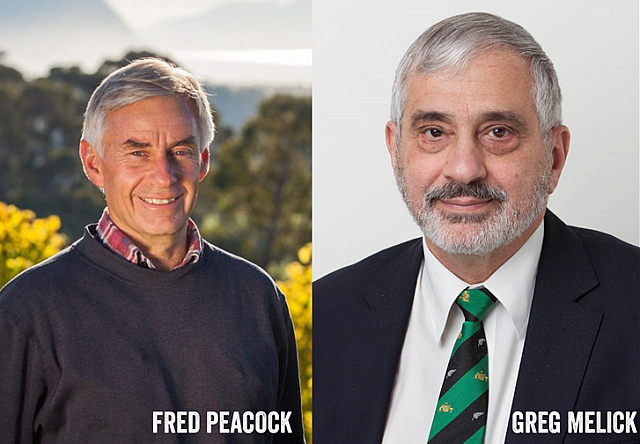Tassie Wine Trailblazers, Legends & Life Members!
The very first Australian sparkling wine was made in Tasmania from the 1826 vintage and Tassie's first recorded vineyard planting was way back in 1823. There are some great stories about adventurous Tasmanians having a go at growing grapes in different parts of the island throughout the 1800s, with varying success. The Vintage Tasmania: Complete Book of Tasmanian Wine by Tony Walker is a great read for those interested in the island's wine history.
However, after this brave early start, the island’s wine production all but disappeared until the 1950s.
In 1956, an Italian named Claudio Alcorso planted a vineyard just outside Hobart at Moorilla (still operating today!). At the same time, a French man named Jean Miguet planted a vineyard north of Launceston in Lilydale, now known as Providence Vineyard. Neither was aware of the other when they first planted their vineyards, but both recognised some similarities in the soils and climate with the great grape growing regions of their homelands.
The official advice at the time was that Tasmania was unsuited to wine grapes - it was too cold, too remote, too unpredictable. This advice continued for some 30 years after these vineyard plantings. Fortunately they and other brave souls along the way ignored the official advice and followed their own instincts to plant vineyards around Tasmania.
Not only did they emphatically prove their detractors wrong, they had a profound understanding of Tasmania's maritime climate, soils and suitability for wines of incredible intensity, structure and flavour. They knew Tasmania would (and needed to) always be focused on the quality and value of its wine, rather than the quantity. And they knew that other people would discover the island over time, and that some things needed to be protected. Australia's first appellation system was developed in Tasmania in the 1980s to do just that - focus efforts on quality over quantity and on value over volume - wines of great quality in small quantities. At this time, Tasmania's vineyard area was less than 100 hectares and the whole island was producing just 10,000 dozen bottles approximately annually. What foresight!
Fast forward to today and Tasmania is recognised as one of the best places on the planet to grow and craft exceptional wines, with great intensity of flavour and a mouthwatering structure Yes, our climate is cool, the weather is unpredictable and the island is remote - but it’s these things that make Tasmanian produce (and people) so great - with great risk comes great reward!
Tassie Wine Trailblazers

Introducing the Tassie Wine Trailblazers - the enterprising and determined people who grew the Tasmanian wine sector during the 1950s, 1960s and 1970s. Their courage and conviction have paved the way for the success of today's wine sector.
Featured in the video above are our inaugural Tasmanian Wine Trailblazers:
- Claudio Alcorso (November 2024)
- Graham Wiltshire (November 2024)
- Andrew Pirie (November 2024)
Nomations for people who should also be recognised as early Tasmanian wine sector pioneers across the 50s, 60s and 70s are invited at any time - contact Wine Tasmania on mail@winetasmania.net.au to submit stories and photos.
Life Members

The Wine Tasmania Board awards Life Membership to individuals who are no longer professionally involved in the wine sector, but who have given outstanding service to the Wine Tasmania and the Tasmanian wine sector more broadly. Wine Tasmania recognises the outstanding service of the following individuals:
- Andrew Hood (November 2012)
- Graeme Lynch (October 2016)
- Scott Dawkins (November 2018)
- Ruth & Peter Althaus (May 2022)
Tassie Wine Legends!

Wine Tasmania also recognises people who are still actively involved in the Tasmanian wine sector that have made an extraordinary contribution. These individuals are crowned Wine Tasmania Legends.
- Fred Peacock, Bream Creek Vineyard (2020)
- Greg Melick, Pressing Matters (2024)
Nominations for Tassie Wine Legends are invited at any time - contact Wine Tasmania on mail@winetasmania.net.au to submit stories and photos.

